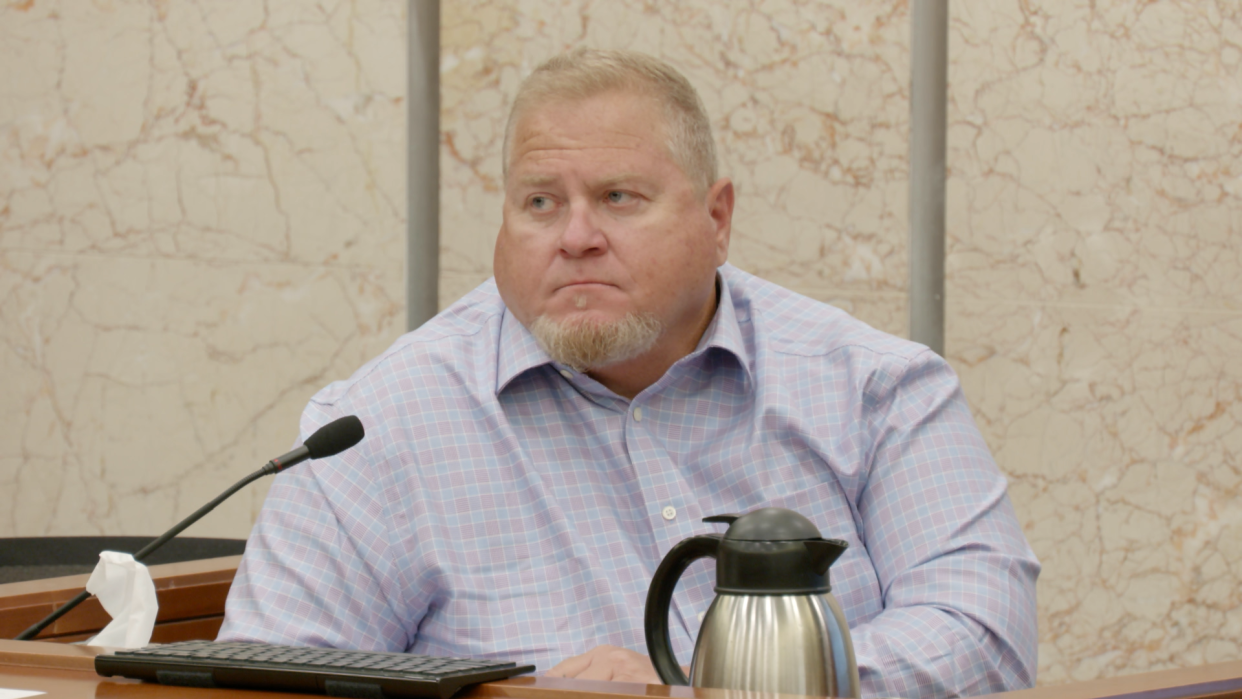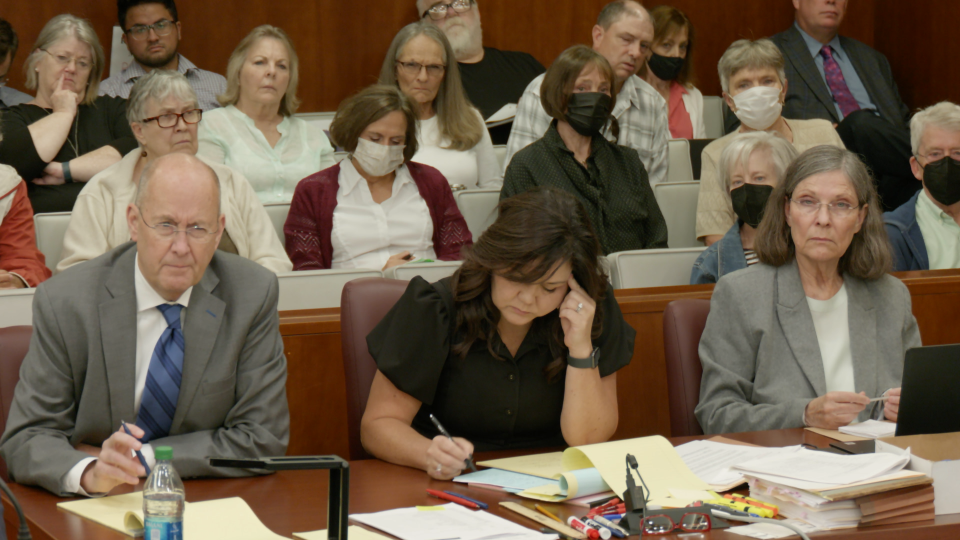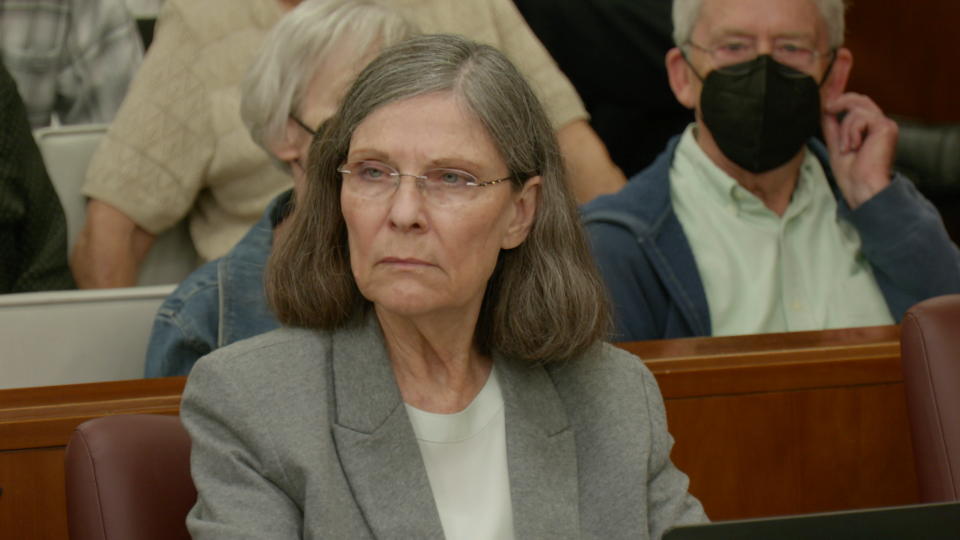Defense: Murder investigation against Dana Chandler was full of ‘missed opportunities’

In building a tunnel-vision case against Dana Chandler, prosecutors missed several opportunities to investigate alternate suspects in the 2002 killings of Mike Sisco and Karen Harkness, Chandler’s defense team argued Tuesday.
The trial resumed Tuesday morning after a long recess over the weekend. Shawnee County District Court Judge Cheryl Rios had recessed the trial proceedings unexpectedly Thursday morning before they started for the day.
Day 10 of proceedings in the trial kicked off with the defense calling to the stand Walter Rogers, a convicted burglar who had forged a check taken from Sisco. Rogers, who was combative and defensive during questioning, reviewed a video of prior testimony from him in 2002, when investigators interrogated him about the origin of the check.
In that 2002 interview, Rogers admitted to having gotten the check from Terry Tignor, who has since passed away. Rogers said he had found out while incarcerated for a separate charge that the check belonged to a murder victim, but he emphasized he had no knowledge of the killings.
Karen Harkness and Mike Sisco were killed in 2002
Sisco, the ex-husband of Chandler, had been found shot to death alongside his girlfriend Karen Harkness in the latter’s basement in July 2002.
After a decade of investigation, Chandler was arrested and charged with the killings, and in 2012, was found guilty of two counts of murder, despite no physical evidence that could even place her in Kansas. However, prosecutorial misconduct during the 2012 trial led to the Kansas Supreme Court overturning Chandler’s conviction and ultimately disbarring Jacqui Spradling, the prosecutor during that original trial.
In questioning Rogers and examining the investigation into the provenance of the forged check, Chandler’s attorneys pointed out various missed opportunities for law enforcement to chase down leads to other suspects. While four checks were found to have been stolen from Sisco, only one was ever recovered, according to surviving evidence from the 20-year-old investigation
But in his cross examination of Rogers, prosecutor Charles Kitt asserted that there was no way of knowing when or where the forged check, which still had a prior address for Sisco in Lawrence, was taken. Additionally, a checkbook with Sisco’s current address was found intact at the crime scene.
The defense also called Stephanie Beine, a forensic scientist who previously worked in a St. Louis crime laboratory. Beine now consults on criminal investigations through her Missouri-based company Forensic Advising.

Through way of defense attorney Tricia Bath’s questioning, Beine raised several issues with the way investigators and forensic scientists analyzed the limited physical evidence recovered from Harkness’s basement. The defense has focused on a piece of gum, 11 shell casings, and the various, small pieces of hair forensically vacuumed from the scene
While investigators had sent off those pieces of evidence for DNA and fingerprint analysis, tests returned no known matches, including to Chandler, who had been fingerprinted and submitted a DNA swab.
Even though modern tests could return better results on even partial pieces of DNA, Beine took issue with what she said were faulty procedures by investigators’ forensic scientists, who inadvertently destroyed or failed to preserve potential DNA evidence. For example, a small limb hair, found on one of the shell casings, could have pointed to the killer, but the hair was destroyed to test it, and the original test yielded no matches.
Defense recalls retired detective to the stand
In the afternoon, the defense called retired Topeka Police Department Sgt. Richard Volle back to the stand, after he had previously testified in the trial.
Volle, in occasionally terse responses to lead defense attorney Tom Bath, emphasized that while he had been the lead detective in the murder case, he did not remember either participating in or making several of the decisions that Bath characterized as missed opportunities to investigate other suspects.
For example, Volle said he had not been the one to ask for a DNA analysis of the piece of gum, because in his opinion, it seemed to be an unimportant piece of evidence that had been found two doors away from the crime scene. He ultimately submitted it for analysis years later after the district attorney’s office reopened the case and built its case against Chandler, as part of what he characterized as a “box-checking” procedure.
Volle’s testimony turned contentious when Bath asked the retired detective about his prior testimony in Chandler’s 2012 trial that Sisco had in 1998 obtained a protection from abuse order from Chandler.
While Sisco had indeed sought a restraining order, no such order was ever granted, and even then, a restraining order differs from both a protection from abuse order and a protective order. Jacqui Spradling’s failure to correct Volle was one element of what the Kansas Supreme Court would later find to be a pattern of prosecutorial misconduct.
In pre-trial hearings, Chandler’s team had successfully argued against allowing either the restraining order or questions about Volle’s prior testimony that a protection from abuse order existed.
After Bath’s questioning Tuesday, Kitt argued that he had opened the door to questioning on the subject, over Bath’s objections that Volle had perjured himself and the jury should be allowed to perceive Volle as dishonest. Volle was ultimately allowed to clarify he had misspoken in 2012, and he had confused the restraining order request with a granted protection from abuse order.
Retired forensic scientist takes the stand

Later in the afternoon, the defense called Linda Netzel, a retired forensic scientist and administrator with the Kansas City Crime Lab. Netzel had assisted with the original 2002 investigation, and ahead of the August trial, had put together a report and presentation on the collected evidence.
Nothing in the recovered evidence, including some of Chandler’s items, could point to Chandler having been in Harkness’s basement.
The 13-member jury is down to just one alternate juror, after having started the trial with five.
Arguments in the trial are expected to wrap up around Thursday.
Chandler, who represented herself during much of the pre-trial proceedings and hearings leading up to the August 2022 trial, is not expected to take the stand.
Rafael Garcia is an education reporter for the Topeka Capital-Journal. He can be reached at rgarcia@cjonline.com or by phone at 785-289-5325. Follow him on Twitter at @byRafaelGarcia.
This article originally appeared on Topeka Capital-Journal: Defense calls witnesses in Dana Chandler murder trial

